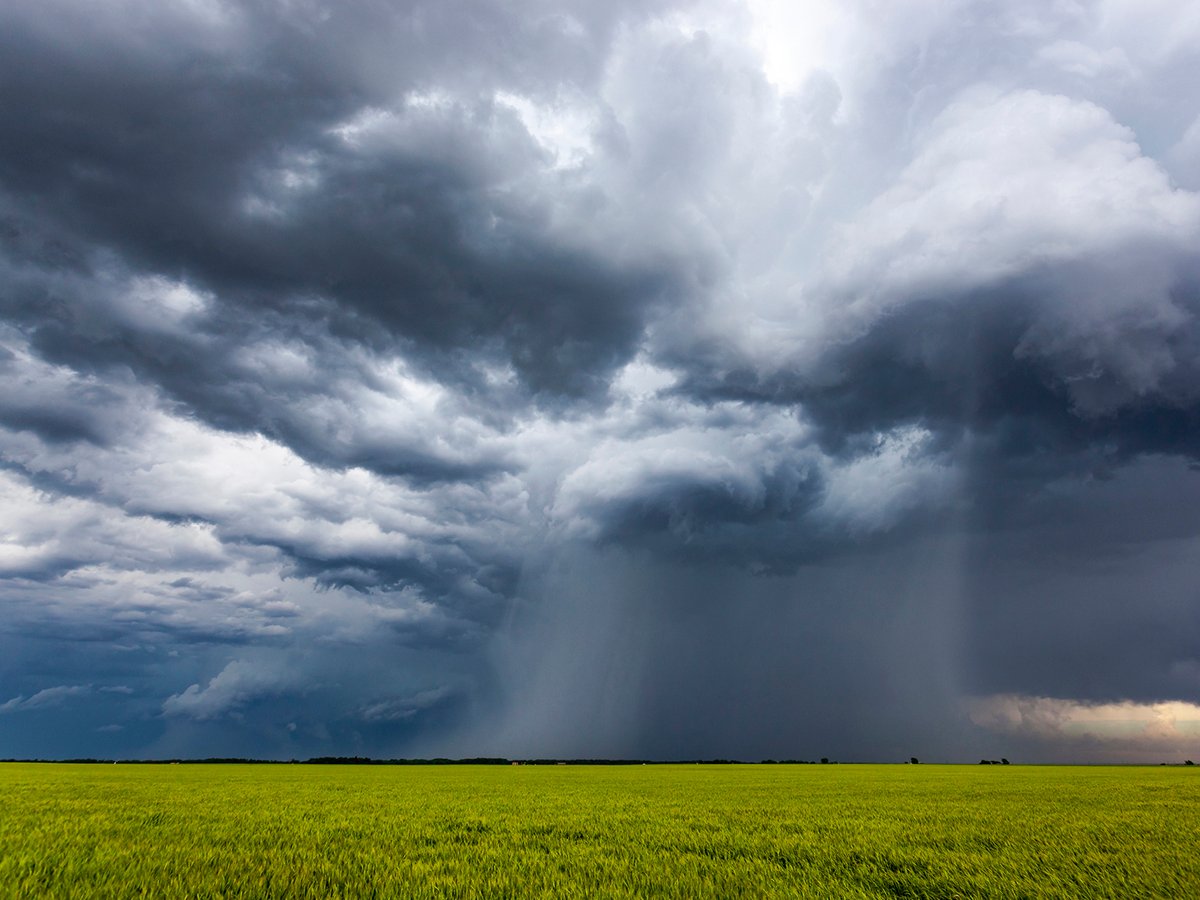A biofuel venture producing a range of green energy products has been proposed for Strathmore, Alta.
CR Fuels Inc. plans to build an ethanol, biodiesel and biogas facility near Cattleland Feedyards. The facility is estimated to be worth $275 to $325 million, and the company hopes construction starts this fall.
Plans and building permit applications submitted to Wheatland County have been tabled until further information is provided on the proposal.
An open house planned for May 7 should provide information on what the facility might mean to the community, said Greg Appleyard, who owns the 25,000 head Cattleland feedlot and is vice-president of commercial development with CR Fuels. Also involved in the plan is CR Fuels president Gordon Hart, executive vice-president Wayne Rousch and vice-president of finance Karen Gregory, who owns Cattleland with Appleyard.
Read Also

Extreme rain increases as planet warms
In this issue, we are going to wrap up our look at extreme rainfall by examining the different weather patterns that tend to be associated with these rainfall events.
Neighbours have raised concerns over possible changes to the landscape, odour and traffic. Company owners have tried to assure them the system will be enclosed and use the best technology available.
The facility could add $3 to $4 million to municipal tax revenue and create up to 100 local jobs. At full production the plant would need 200,000 bushels of canola and 200,000 bu. of wheat each week, Appleyard said.
The plan is to annually produce more than 113 million litres of biodiesel from canola and 95 million litres of ethanol using wheat. The biogas facility using feedlot manure should generate up to four megawatts of power.
Markets are already in place for ethanol, and biodiesel markets are developing.
“I am a big believer that biodiesel will be greater in the future, especially if you look at Europe and how successful they have been, ” Appleyard said.
Calgary uses five percent biodiesel in about 80 city-run vehicles and burned about one million litres last year. The blended percentage will increase over time. Victoria announced it is switching to a biodiesel blend for all transit vehicles as of April 10.
Appleyard and Gregory considered building a biodigester to produce electricity from manure soon after buying Cattleland in 2003, but there was little economic incentive. As they researched the idea, potential investors suggested a larger multiplex operation to entice financers.
CR Fuels hopes to buy its canola and wheat from local producers.
“We’re also looking at, when it is up and running, allowing co-operative groups to own shares in the plant as an incentive to provide grain,” Appleyard said.
Canola production is adequate to supply the biodiesel component, but finding enough starchy feed wheat could be a problem.
“We could flood the country with biodiesel plants. The ethanol plants will only be a handful around the province.”
Cattleland has experience using biofuel byproducts, distillers grain and glycerin.
Glycerin from biodiesel production could be diverted to the biogas facility because its main component is methane, a good fuel source. Higher grade glycerin could be sold elsewhere.
The ethanol plant will produce enough distillers grain for 100,000 head of cattle.
Cattleland now uses wet distillers grain from Permolex Ltd. near Red Deer.
Distillers grain makes up as much as 40 percent of the diet fed to Cattleland animals, which appear to do well. Rations must be formulated carefully and feedlot employees continually compare results. Cattle fed such a ration must stay on it or they will develop health problems if their energy balance is upset.
Appleyard, who has fed cattle in Colorado using corn-based distillers grain, said more research is needed on wheat-based distillers grain.
“The worst corn distillers in the U.S. is still better than rolled corn. The worst wet distillers of wheat isn’t as good as barley. You have to make sure you don’t compare the two,” he said.
Cattleland uses biodiesel in cattle trucks leaving the feedlot for the United States. Truckers report that engines are better lubricated than those running on low sulfur diesel fuel, which tend to have more engine dryness and motor noise.















